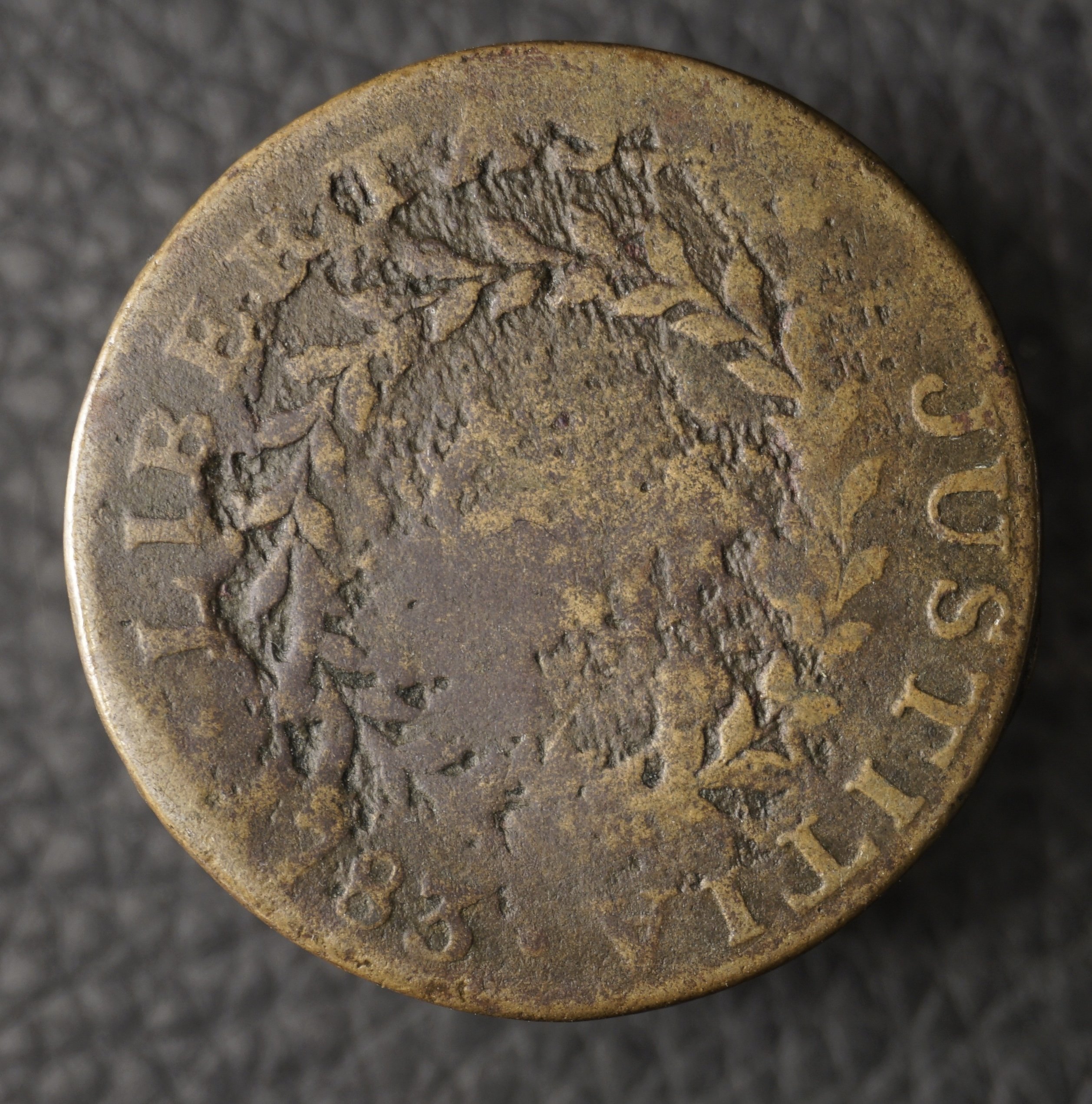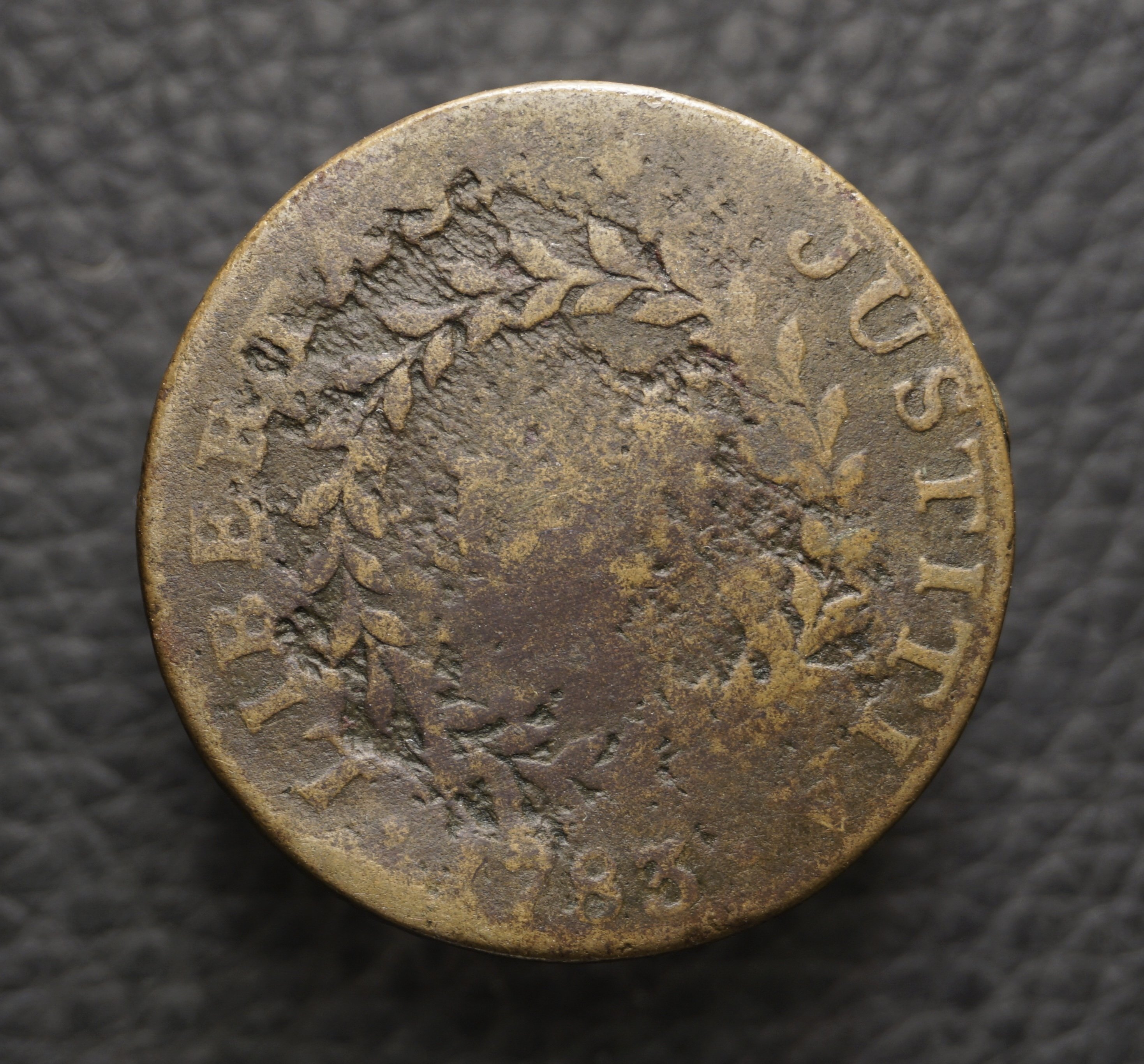Colonial Experts: 1783 Nova - Mint Error ?
 RBAker
Posts: 15 ✭
RBAker
Posts: 15 ✭



I’ve shown several collectors this Nova. I’ve asked, is this a mint error & will it straight grade?
Most seem to agree it’s an error, and majority (but not all) believe the error, itself, will warrant a Details grade.
I wanted to query the communities thoughts.
Does a planchet flaw not allow a coin to straight grade?
Literature-> Research-> Diagnostics-> Attribution-> Cherry-Pick
0
Comments
Would that not be a case for preservation, in spite of its grade?
to much damage for me to send in, jmo
Is it damage or a defective planchet? 🤔
Defective planchet
But will this prohibit it from a straight grade ?
Literature-> Research-> Diagnostics-> Attribution-> Cherry-Pick
Is an error coin damage? The Wreath is in tact
Literature-> Research-> Diagnostics-> Attribution-> Cherry-Pick
Looks like damage to me. Even without the damage it wouldn’t be worth grading due to its low grade.
Post mint damage? or damaged planchet before striking. It's clear that the wreath is not damaged, ruling out PMD
My research indicates that PCGS has only slabbed a single example of a NOVA designated "Mint Error" on the label. That being true, the grade would be a small factor in determining if a coin should be slabbed, given that only one example exists.
Literature-> Research-> Diagnostics-> Attribution-> Cherry-Pick
Post mint damage. Do you have an image of the “mint error” Nova?
I'm inclined to support this assessment.
Damage
Proud follower of Christ!
I see an environmentally damaged coin with the corrosion affecting the metal differently based on density. As the coin design is struck, the metal is smashed down, creating areas of greater density and less density. That can manufacture unique effects when exposed to the environment. I believe that is why the wreath appears intact with the metal in the fields eaten away. Additionally, it appears that the coin has since been circulated, likely flattening the high points and leveling them out even more.
I don't see how that effect could be created in any minting production process.
"But seek ye first the kingdom of God and His righteousness and all these things shall be added unto you" Matthew 6:33. Young fellow suffering from Bust Half fever.
BHNC #AN-10
JRCS #1606
How come there's no evidence of the "defect" in the wreath? Looks environmental.
All comments reflect the opinion of the author, even when irrefutably accurate.
That looks like quite a few metal detecting digs that looked like that. Like it's saidanove, environmental damage
Post strike corrosion.
As to why the wreath is not affected, a possible scenario. The coin became coated in the affected area with some unknown and mildly corrosive substance, but continued to circulate for a while. During this circulation the corrosive substance wore off of the high points of the wreath and the lettering. The coin then left circulation for a couple of centuries and the corrosive substance on the field did its thing.
TD
Thanks everyone. The combination of these scenarios definitely helps in understanding the condition.
Literature-> Research-> Diagnostics-> Attribution-> Cherry-Pick
@RBAker
I see what you are asking but I don't know what it is or if it is a combination of things. Here are a couple of planchet defects with a similar thing where the devices are full over the planchet defect. But again I am not saying that is what yours is or is not.
Also on the planchet defect being detailed graded the answer is Yes if it is to large according to PCGS page and appears also dependent upon the type of of coin. Screen shot below. But if submitted under the error submission then it can get an error designation.
https://youtube.com/watch?v=hYCRaWPlTIE Sophie Lloyd, guitar shred cover of Panama (Van Halen)
https://youtube.com/watch?v=dOV1VrDuUm4 Ted Nugent, Hibernation, Live 1976
RLJ 1958 - 2023
A population of 1 (error) would sure make the taking a chance of getting that designation very tantalizing. Good luck either way. James
My gut is telling me that non-perfect planchets are penalized in the marketplace for colonial copper, even if it's a defect worthy of being called an error, unless the underlying coin is so rare that there's no coin available on a less defective planchet.
Keeper of the VAM Catalog • Professional Coin Imaging • Prime Number Set • World Coins in Early America • British Trade Dollars • Variety Attribution
I completely agree, however as >@lilolme pointed out: PCGS 93 Planchet Flaw notates "Planchet Flaw: Metal impurity or defect in the planchet. .... Context is also important. Planchet flaws on certain U.S. Colonial coins are expected "
Literature-> Research-> Diagnostics-> Attribution-> Cherry-Pick
Planchet flaws typical of a colonial type may be forgiven in the grading process, but having a perfect planchet is rewarded in the marketplace and perhaps also the grading room. Those that are uncharacteristically large could be referred to as errors, but regardless of what they're called, neither the grading service nor the next buyer will be more inclined to like it over one that is less flawed.
I did a quick search on Heritage for "1783 nova flaw" to see what came up. A couple NCS holders said planchet flaw, but none of the PCGS holders did. Heritage's descriptions of the latter always downplayed the flawsby calling them small, minor, tiny or inconsequential. The adjective for the coin in question (assuming it's a planchet flaw and not just damage) would more likely be large, major, or egregious. A planchet flaw that size on a Morgan dollar or a modern would be called spectacular or dramatic and worthy of slabbing as an error.
Yes, context is important.
Keeper of the VAM Catalog • Professional Coin Imaging • Prime Number Set • World Coins in Early America • British Trade Dollars • Variety Attribution
It is funny the difference in perspective, what is desirable on more modern coins can be a detriment on colonials. Things like planchet flaws, off center strikes are looked on as negatives. I've been looking for a Nova 1-A and there is one I keep coming back to but haven't purchased because it is a bit off center.